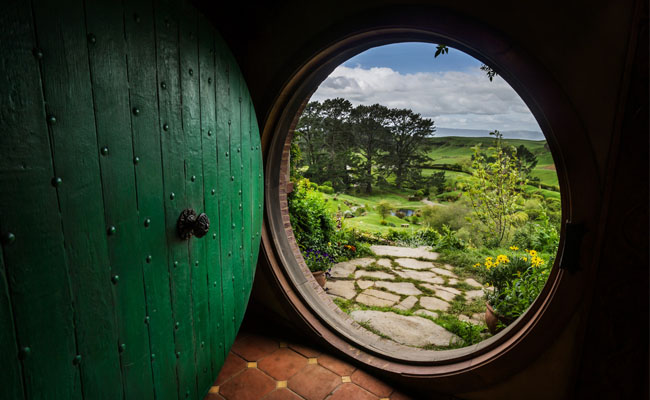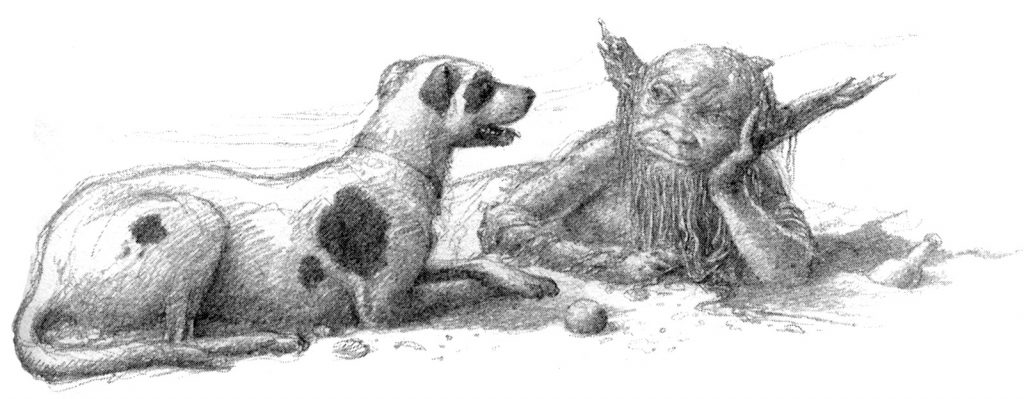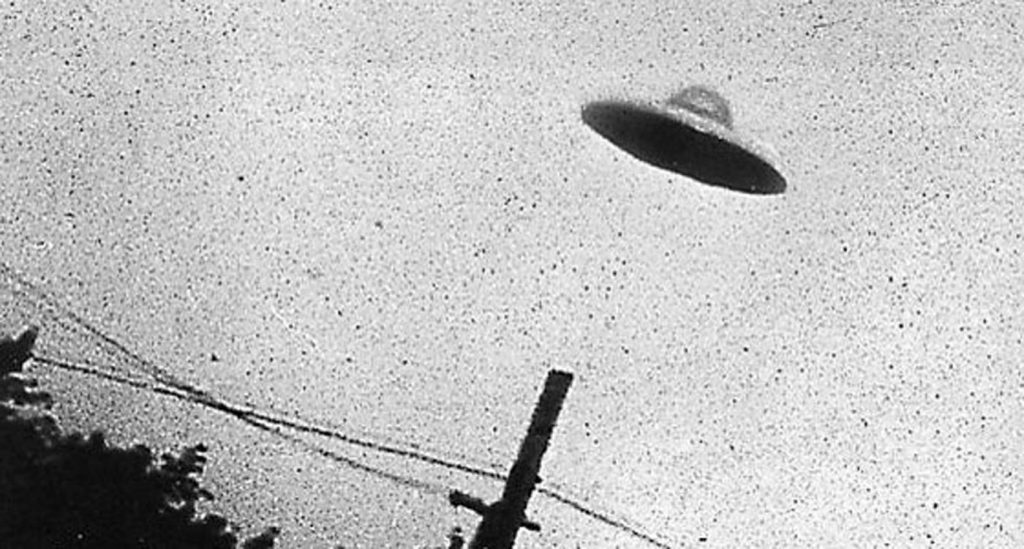The Most Magical Doorways In Literature
Books, in and of themselves, are magical doorways. Opening a book is as simple as opening a door in the real world, but often much more rewarding! Doorways within books are something special. A character who passes through a magical doorway into a world of adventure mirrors the adventure of the reader themselves. They charm and intrigue us as readers. They tempt us into imagining that it’s possible to open an ordinary door one day and find ourselves in a real-life adventure.
For many children, the first time this happens is after reading The Lion, The Witch, And The Wardrobe. C.S. Lewis’s enchanting adventure begins with an ordinary child who steps through an ordinary door and into the magical realm of Narnia, where she is a chosen Queen and must go on a quest to save the creatures who live there. If you opened every closet with a little hope in your heart after reading this book, you aren’t the only one! Nor is this the only magical door in literature, even though it is one of the most famous. With this month marking the anniversary of C.S. Lewis’s birth, we’re bringing you a run-down of our favorite bookish portals, and inviting you to step through.

The Wardrobe Door To Narnia (C.S. Lewis, The Lion, The Witch, And The Wardrobe)
The door that started it all, the inspiration for our list, and one of the best-known, we have to begin with the magical wardrobe to Narnia. Made from a magical wood, this wardrobe is a portal to an entire Kingdom, and another time. Stumble through it into Narnia and you could spend a lifetime on that side but only a few moments on the other. It’s not a reliable doorway, however. The Professor reveals that he can no longer pass through it, and even Lucy herself isn’t able to use it every time she tries. It’s not the only doorway within the Chronicles of Narnia, either. The series is full of portals – from the magical rings and ponds used in The Magician’s Nephew to the various other portals the children use in their adventures, there are plenty of doorways between the worlds (although few that are literal, not just literary, doors).

The Cupboard Door (Lynne Reid Banks, The Indian In The Cupboard)
Another classic children’s book series, The Indian In The Cupboard, centers on a magical cupboard like The Lion, The Witch, And The Wardrobe. Unlike the C.S. Lewis classic, this cupboard isn’t big enough for a human to travel through. Instead, it’s a white medicine cabinet with a key, the perfect size for keeping toys… and with the unexpected result of bringing the toys locked within it to life! This beautiful story taps into every child’s fascination with locked doors, secret hidey-holes, and the ever-present dream of their toys becoming magically ‘real’. It’s a fascination that Pixar knows all about, but years before Toy Story, The Indian In The Cupboard brought a world of cowboys and Indians to life for the lucky Omri. Although the books garnered some controversy for their portrayal of Native Americans, they remain a favorite for fans of magical keys and doors.

The Door To Wonderland (Lewis Carroll, Alice’s Adventures In Wonderland)
Alice passes through several doorways and portals in her adventures, starting with the rabbit hole itself. The rabbit hole may not be a doorway in the traditional sense, but it’s definitely a portal rather than your average rabbit hole! It also drops her into a room of doorways – all locked, except for a single, tiny door behind a curtain that opens up to a magical garden. We all know how Alice eventually gets through this door, with the help of some magical cake and liquid that shrinks her to the appropriate size. It’s the official and literal door into Wonderland, although later books in the series show that (as in The Chronicles Of Narnia) similar portals exist in other objects such as a mirror and the eye of a needle. This is especially interesting because not only is Alice on of the few characters on this list to deal with doors she cannot open, but her door is also behind a curtain – layers upon layers of symbolism there!

The Door In The Living Room (Neil Gaiman, Coraline)
While many literary doors lead to magical places, some lead to dangerous ones. The living room door in Coraline is one of the latter, and not one that any reader would wish to find in their own home! In this story, a young girl finds a door in her living room, and walks through to another world – almost identical, but far more interesting than her own. Quickly, though, she realizes that this second world is a dark one, and the Other Mother is a soul-stealing creature who sews buttons over children’s eyes. Coraline must save her parents and the ghosts of the children who have gone before, or she will be lost forever. A magically creepy tale of keys and doorways into other worlds, this beautiful and dark story will stay with you for a long time.

The Cairn Tunnel (Ransom Riggs, Miss Peregrine’s Home For Peculiar Children)
More of a portal than a traditional door, the cairn tunnel is not a door between worlds, but a door between times in this unique story of the strange and unusual. Jake, a young boy who is traumatized by watching the violent death of his grandfather, journeys to his grandfather’s childhood home on a remote Welsh island. There, the home is destroyed… but only on one side of the cairn tunnel. On the other, Jake finds a copy of the island from his grandfather’s youth, where the day repeats in an endless loop, and where a house full of ‘peculiar’ children live. It’s the start of an adventure that spans a trilogy, and it all begins with this doorway to the loop, and to Miss Peregrine’s Home For Peculiar Children. Although this ‘door’ has no handle or hinges, it definitely opens into a magical world.

Windows Into Other Worlds (Phillip Pullman, His Dark Materials)
More doorways without literal doors, Pullman’s His Dark Materials trilogy is heavily influenced by the concept of other worlds and the possibility of doorways between them. The first such doorway appears at the end of the first book, The Golden Compass, when Lord Asriel blows apart the sky, creating a bridge between worlds. This dramatic creation is a one-off, however, and the (many) doorways that appear throughout the later books are made with the subtle knife – surgically cut between worlds, rather than roughly blasted through. The knife, wielded by Will Parry, can create a door to any other world – even into (and out of) the land of the dead.

Platform 9 ¾, The Door To The Chamber Of Secrets, Grimmauld Place, And More (J K Rowling, The Harry Potter Franchise)
Another magical world just brimming with doorways is Harry Potter’s. There are the doorways that actually look like doorways: the door to the Chamber of Secrets (the large, circular door, rather than the opening in the girl’s bathroom), the door to the vanishing cabinet, the door to the Room of Requirement, the many doors behind portraits (to the common rooms and the tunnel between Hogsmeade and Hogwarts), the disappearing door to 12 Grimmauld Place and the doorway that is the physical manifestation of the Veil between life and death that lives in the Ministry of Magic. Then there are the doorways and portals that look nothing like actual doors. The brick wall that opens to Diagon Alley, the fireplaces that act as a transport network, portkeys, passages, and of course, Platform 9 ¾. J K Rowling’s world is full of doorways and magical transportation, and while some are a little scary, we’d love to step through the rest.

The Doors On The Beach (Stephen King, The Dark Tower Series)
There are multiple different doors in Stephen King’s epic tale of a Ka-Tet that wanders between worlds on a quest to save them all, although they don’t appear in every novel within the series. We are first introduced to the doors between worlds in The Drawing of The Three, when the gunslinger wakes on a beach to find a mysterious door. A literal door, it hangs in mid-air, without a frame, and is only visible from one side. Open the door, and the mystery deepens… the gunslinger can walk through it into another man’s mind. This first door is followed by two more doors into other people, as well as a fourth door into a world, rather than a mind, in a later novel (Wolves of the Calla). Throughout the series, these doors connect Roland and his crew with the world we know, as we learn that they aren’t the only doors between worlds, either. A gorgeous epic with a Western flair, The Dark Tower is a must-read for fans of Stephen King or portal fantasy.

The Doors of Durin (J. R. R. Tolkien, The Lord Of The Rings)
The ultimate fantasy epic (that inspired Stephen King to write The Dark Tower series) doesn’t have quite as many doors as some other magical worlds on this list – but there are two very important ones. The first appears in The Hobbit, rather than The Lord of the Rings itself, and is a round wooden door that leads into a very nice hole in the ground. This door to Bilbo Baggins’s hobbit hole has captured imaginations for decades, and marks the start of this long and wonderful story. Marked with a sigil by the wizard Gandalf, the door becomes a magic sign to Thorin’s dwarves, bringing them together to enlist Bilbo’s help on their quest. The second set of Tolkien’s famous doors are also connected to dwarves – the Doors of Durin, from The Lord of the Rings. The Western Door into the Mines of Moria, this enchanted doorway will only open to those who know the password, and are inscribed with the (now-famous) elven words “Speak, friend, and enter”.
Which doorways from literature would you love to enter as a friend? Comment below and let us know!



